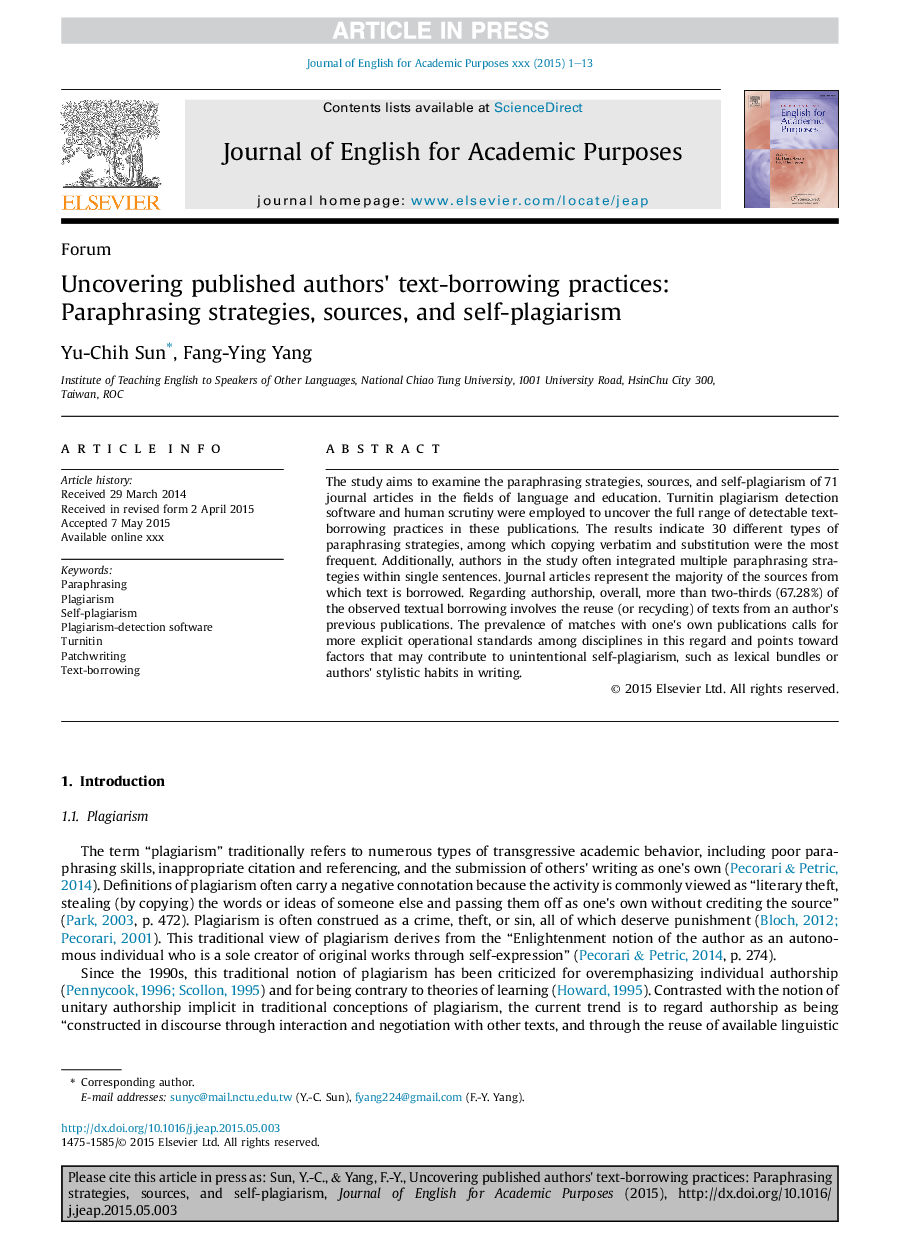| Article ID | Journal | Published Year | Pages | File Type |
|---|---|---|---|---|
| 6843244 | Journal of English for Academic Purposes | 2015 | 13 Pages |
Abstract
The study aims to examine the paraphrasing strategies, sources, and self-plagiarism of 71 journal articles in the fields of language and education. Turnitin plagiarism detection software and human scrutiny were employed to uncover the full range of detectable text-borrowing practices in these publications. The results indicate 30 different types of paraphrasing strategies, among which copying verbatim and substitution were the most frequent. Additionally, authors in the study often integrated multiple paraphrasing strategies within single sentences. Journal articles represent the majority of the sources from which text is borrowed. Regarding authorship, overall, more than two-thirds (67.28%) of the observed textual borrowing involves the reuse (or recycling) of texts from an author's previous publications. The prevalence of matches with one's own publications calls for more explicit operational standards among disciplines in this regard and points toward factors that may contribute to unintentional self-plagiarism, such as lexical bundles or authors' stylistic habits in writing.
Related Topics
Social Sciences and Humanities
Arts and Humanities
Language and Linguistics
Authors
Yu-Chih Sun, Fang-Ying Yang,
